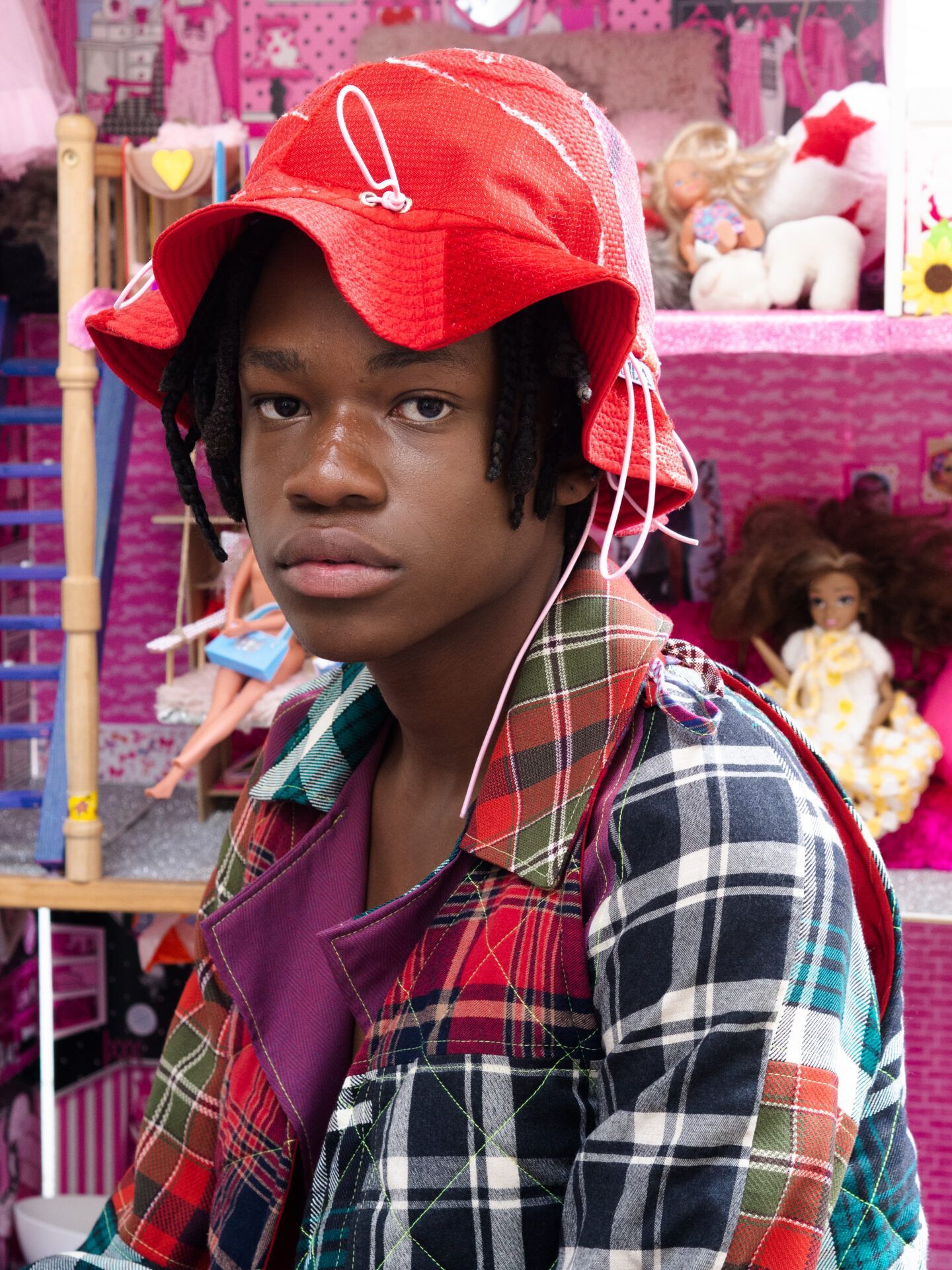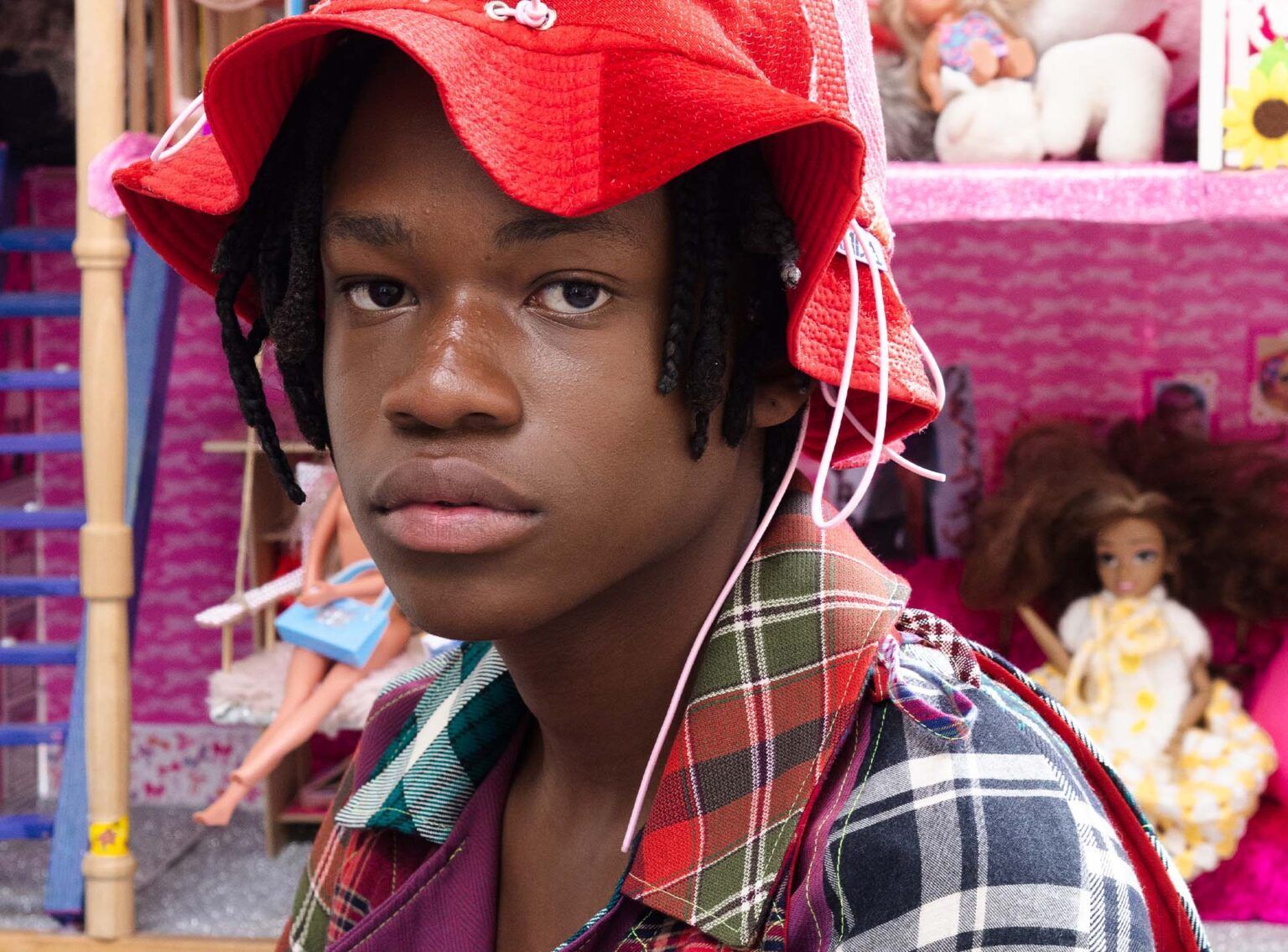What brought you to fashion design?
I started being interested in sewing my own clothing during my highschool years. There was no design in these attempts but I focused on the craft itself and learned how to sew properly, with the help of my grandmother and mom. Then, after high school, I took a year off and went to London where I worked in a sandwich bar to make a living and during my free time, I was always somewhere at live-drawing sessions. It was so inspiring because the lessons weren’t in regular classrooms or such, I got into this community and the sessions were taking places in bars, attics of numerous buildings, and so on. It was so exciting for me. So I started sketching a lot, on the tube, on the streets, everywhere, and also went to a fashion drawing course at LCF. When I got back to Czechia, I said I’ll give it a try and applied for an art university and got in. But I’d say that the time when I really got into fashion design for real was the last year of my master’s degree at the Academy of Arts, Architecture and Design in Prague. Before that it was more of a doodling, I guess.


What’s the main idea behind your brand?
The main idea is to create an extreme recycling medium. I don’t consider my brand being zero-waste like it may seem to some people but I always try to use every bit, every scrap of fabric I can.



You are a brand with sustainability at its core, and you use pre-existing materials and fabric waste. Where do you get them?
It firstly started when I was in my diploma year and was thinking what my project would be about. Every evening when I was sweeping all the little pieces of fabrics that were lying on the floor in our school studio, I was thinking, “there must be a way to use all this,” because throwing all that away just made me cry. And I was always obsessed with collecting scraps and creating scrapbooks, so I started collecting it from the floor and sewing it together. Now, after four years, I still sorta dumpster-dive with permission at numerous fashion studios around Prague and collect their offcuts and unwanted fabrics. Even with just a small production, the designers often have so much waste that they just simply cannot use, store or in any other way take care of, because there is just no time, money or storing space – so it has to go.


After I gain some amount, I start to sort the pieces, for example, the colours I like together and so on, and make metrage by placing the pieces side by side, and then sewing them together by hand to secure them. Next step is taking this material to Brno (South Moravia) where there is the last maliwatt machine of this specific type and which is used to create woolen tapestries. The technique is called art protis and is rarely used now (the work of Karolina Jurikova took me to this technique). There are around four hundred needles with a thread, which interlace this fabric so that it is compact and my garments can be cut from it. It’s a very long process, I call it the slowest fashion. But I love it, love how I know every bit of this fabric, how unique and non-repetitive it is. I know I am not saving the world but it’s about the mindset. Don’t throw it away – save it, you might use it later!



What inspires you?
Lately, I got more into the business side of my brand so I seek inspiration in other fashion entrepreneurs, fashion communities and projects. Mostly how they do business. I love my former fashion course mate’s brand Ahluwalia. It’s so funny because there is no way she remembers me but I feel kinda proud to have been in the same room as her in the past. She is definitely making a change, sustainability-wise, because she works with deadstock too and her brand gets bigger and bigger. Next inspiration is Bethany Williams, also a Londoner. She is sourcing materials in a very similar way so when a studio like hers can make it, I believe you don’t have to make compromises when you get big. It’s just so cool. Also, she is working with social projects and communities.


Visually-wise I am very dependent on my mood. So when I am in the greatest mood, I can be inspired by literally everything. Like birds that are sitting by our studio windows or nature in general. I like to take walks in botanical gardens and just observe… I don’t know if that’s somehow mirrored in my work but definitely an inspiration. I also love music, mostly R’n’B, and other – for some people – guilty pleasures. So, if a great tune kicks in, I can go all night in my studio. When I am down, I can scroll Instagram for hours and nothing inspires me.

What’s next for you?
Nothing is really certain now. I am just setting my brand’s goals now. I really want to get in contact with some shops abroad, so I can sell stuff also outside of the Czech Republic. I see more potential somewhere else because the garments I am making are too expensive for the majority here, unfortunately (even for myself, of course). So working on some solid income is my plan now because it would be so cool to employ someone, to decentralize all the parts of my process and give somebody a fairly paid job.
And the last question: utopian or dystopian future. What is your bet?
I cannot decide. 🙂
BIO / MiJA is a fashion brand and a self-described extreme recycling medium, and was founded by designer Mia Jadrna in Prague, the Czech Republic, in 2018. MiJA is always in search of ways to treat textile waste. Using various techniques, it refits, reshapes, and repurposes ignored, unwanted and otherwise abandoned materials giving them a new lease of life. The brand was born out of an obsession to use everything and waste nothing. Under the overwhelming strain of too much & too fast, it builds a statement that there is no need to buy new materials to create new things. Many pieces from MiJa collections are made from the smallest thrown-away textile scraps from friend’s fashion studios around Prague. Each piece is an unrepeatable 1/1 original, handmade for crafty souls. Mia Jadrna’s work was shown at Mercedes Benz Prague Fashion Week, Fashionclash Festival in Maastricht, We’re Next Prague and DesignBlok Prague. Jadrna gained her MA at the Academy of Arts, Architecture and Design in 2017, and worked as an intern in the Laformela and Martina Spetlova studios.
CREDITS
STUDIO EDITORIAL
𝑝ℎ𝑜𝑡𝑜𝑔𝑟𝑎𝑝ℎ𝑦 @peopleishot
𝑚𝑜𝑑𝑒𝑙s @jabu.brrr and @mia.matsune
𝑠𝑡𝑦𝑙𝑖𝑛𝑔 @sv_marije
ℎ𝑎𝑖𝑟&𝑚𝑎𝑘𝑒-𝑢𝑝 @nil__makeup
𝑐𝑎𝑠𝑡𝑖𝑛𝑔 @das_deck
STREET EDITORIAL
photo @india__ray
styling @terezamarievaltova / @platform108
models @beata_kurucz @evanula1 @irako_sei @xenobae
VIDEO
model @dinara.zhumazhan
photo @petra_pstudio
Interview / Kateřina Hynková
ENG Edit and proofreading/ Františka Blažková




